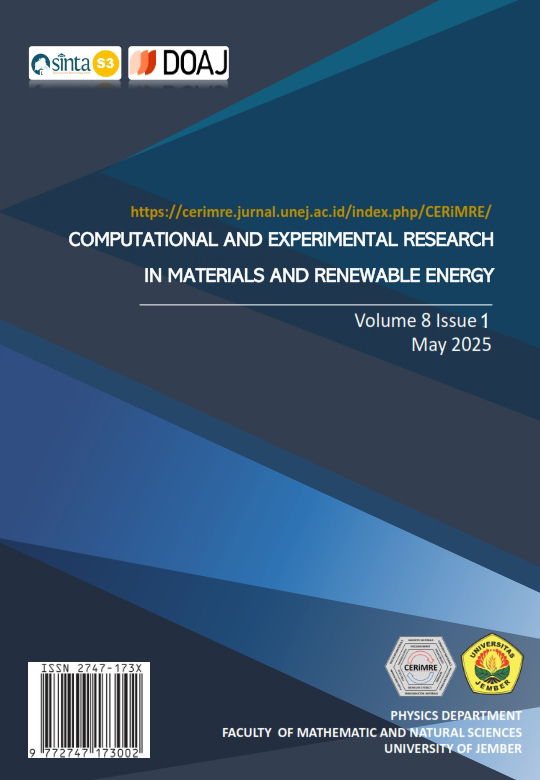Thermal Performance of Public Green Space using Palm Fiber Net-Based Green Canopy and Passion Fruit (Passiflora Edulis) Vegetation
DOI:
https://doi.org/10.19184/cerimre.v8i1.53398Keywords:
Public Green Space, Green Canopy, Temperature Humidity Index, Indonesian National StandardsAbstract
This study aims to evaluate the thermal performance of green canopies in public green spaces (RTH), both outdoors and indoors, as an environmentally friendly solution. The method involved measuring temperature and humidity over a five-month period with four observation intervals. The data were analyzed using the Temperature-Humidity Index (THI) and compared with thermal comfort standards based on the Indonesian National Standard (SNI). The results show that at 0% plant coverage, the THI values fall into the "comfortable to slightly uncomfortable" category during the period from 19:00 to 08:00. In contrast, at 81.25% plant coverage, THI values remain in the "comfortable to slightly uncomfortable" range from 21:00 to 09:00. Relative humidity met the SNI standard of 75%. Furthermore, the outdoor temperature decreased by 4.9 °C, while the indoor temperature decreased by 3.5 °C. These findings indicate that the presence of green canopies, particularly in private green spaces, significantly reduces both outdoor and indoor temperatures as the percentage of plant coverage increases.
Keywords: Public Green Space, Green Canopy, Temperature Humidity Index, Indonesian National Standards









